Materials nerd stuff
38 posts
• Page 1 of 2 • 1, 2
Materials nerd stuff
Interesting article that includes some great info on why you want to have the shank of a bolt (instead of the threads) most of the way through a double shear joint.
https://www.fastenal.com/content/feds/p ... Design.pdf
https://www.fastenal.com/content/feds/p ... Design.pdf
-
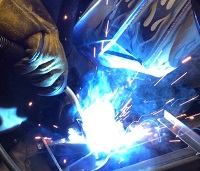
Justin - Official CCB Member

- Posts: 6198
- Images: 0
- Joined: Sat Oct 09, 2010 11:04 pm
- Location: Lakewood
Re: Materials nerd stuff
Um yeah, totally love this geek stuff. Now just wait until one of those acft mechanic types gets a hold of this.
Edit: Further reading for those who would rather not count sheep.
http://www.fastenal.com/content/documen ... eGuide.pdf
Edit: Further reading for those who would rather not count sheep.
http://www.fastenal.com/content/documen ... eGuide.pdf
Best to Date MPG: 26.6
-
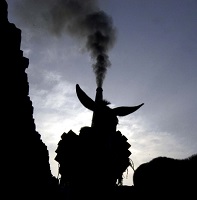
Kinder - Official CCB Member

- Posts: 4371
- Images: 0
- Joined: Wed Sep 29, 2010 9:03 pm
- Location: Parker, CO
Re: Materials nerd stuff
"YAWN" well Kirk, we live by this stuff on all the aerospace vehicles. everything from the skin fasteners to the pins that hold the big stuff on. If you want to get into some real nerdy stuff. Start reading about carbon fiber reinforced plastic. (cfrp) Thats what the entire 787 (dreamliner) is made of.
That guy John.... whatta Jerk.
-

D&D72 - Official CCB Member

- Posts: 989
- Joined: Sun Sep 11, 2011 9:49 pm
- Location: Henderson, Co. Grand Lake, Co
Re: Materials nerd stuff
I would love to take a class, maybe from a fabrication standpoint, on different materials that would be applicable to modifying our rigs.
1973 Bronco, 351 SEFI, Locked, discs, 35's ZF-5spd and Atlas 4spd. 235:1 Crawl Ratio. It may be ugly, but it's slow.
http://www.ucora.org
http://www.ucora.org
-
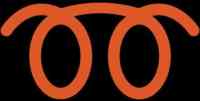
Jesus_man - Official CCB Member

- Posts: 5987
- Joined: Thu Nov 11, 2010 9:36 am
- Location: California
Re: Materials nerd stuff
x2, if only to get a sense of what is actually important. From an engineering standpoint, we use some really neat stuff. For example, a RuffStuff 1.25" heim is rated for 78,000lbs before is starts to deform. That's ridiculous, and I suspect lots of rigs wind up with extra weight because we're overbuilding things.
-

Justin - Official CCB Member

- Posts: 6198
- Images: 0
- Joined: Sat Oct 09, 2010 11:04 pm
- Location: Lakewood
Re: Materials nerd stuff
Justin wrote:x2, if only to get a sense of what is actually important. From an engineering standpoint, we use some really neat stuff. For example, a RuffStuff 1.25" heim is rated for 78,000lbs before is starts to deform. That's ridiculous, and I suspect lots of rigs wind up with extra weight because we're overbuilding things.
The other thing that happens is people replace a bushing or other compliant joint with a rod end thinking that will make the truck stronger, but now the spike loads have increased 4-fold because there is nothing to absorb the impacts and the system as a whole becomes weaker.
I wish more people had your attitude. (you know, actually thinking) We just had to re-design a track bar because the customer didn't think it "looked" heavy duty enough and therefore would not sell well. So what did we do? We made it bigger but had to lower the material grade to manufacture it, resulting in exactly the same strength it had before, but now it's heavier.

And this is why I drink.

Cummins R2.8 diesel, ZF5, AtlasII, HP44/BB9, ARBs, coiled / linked suspension, 37" KO2s, full cage, bumpers, etc.
Build Thread: http://www.coloradoclassicbroncos.com/viewtopic.php?f=3&t=5420
Average 23.5 mpg, Best tank: 25.1 mpg
Build Thread: http://www.coloradoclassicbroncos.com/viewtopic.php?f=3&t=5420
Average 23.5 mpg, Best tank: 25.1 mpg
-
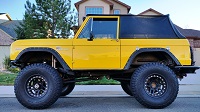
Digger - Official CCB Member

- Posts: 1276
- Joined: Fri Jun 21, 2013 7:53 pm
Re: Materials nerd stuff
I'd love to learn more, when I'm thinking of material and fastener choices I usually look to what exists on my bronco and its application. If it's survived for 40 years on my rig and I make similar choices the fab work I've done should last at least another 40. A bit Red Neck, but I won't pretend that I can outthink a Ford engineer from the 60's & 70's.
Best to Date MPG: 26.6
-

Kinder - Official CCB Member

- Posts: 4371
- Images: 0
- Joined: Wed Sep 29, 2010 9:03 pm
- Location: Parker, CO
Re: Materials nerd stuff
Digger wrote:The other thing that happens is people replace a bushing or other compliant joint with a rod end thinking that will make the truck stronger, but now the spike loads have increased 4-fold because there is nothing to absorb the impacts and the system as a whole becomes weaker.
I wish more people had your attitude. (you know, actually thinking) We just had to re-design a track bar because the customer didn't think it "looked" heavy duty enough and therefore would not sell well. So what did we do? We made it bigger but had to lower the material grade to manufacture it, resulting in exactly the same strength it had before, but now it's heavier.
And this is why I drink.
Then the picture below will bring you joy. Turned up at work today, and is the upper joint for my track bar. On a related note, how big a bolt is realistically needed for the track bar where it connects to the frame bracket? I've drilled out my brackets for a 3/4" bolt, but am thinking about swapping out to something like a Johhny Joint to get a little more cushion. The smaller bolt makes me a little nervous, as I've know guys that have broken bolts holding way less load in a 4 link. Any materials nerd input?
You do not have the required permissions to view the files attached to this post.
-

Justin - Official CCB Member

- Posts: 6198
- Images: 0
- Joined: Sat Oct 09, 2010 11:04 pm
- Location: Lakewood
Re: Materials nerd stuff
What size bolt fits in the bushing? 1/2"? I run whatever fits there in grade 8.
1973 Bronco, 351 SEFI, Locked, discs, 35's ZF-5spd and Atlas 4spd. 235:1 Crawl Ratio. It may be ugly, but it's slow.
http://www.ucora.org
http://www.ucora.org
-

Jesus_man - Official CCB Member

- Posts: 5987
- Joined: Thu Nov 11, 2010 9:36 am
- Location: California
Re: Materials nerd stuff
The big 'ol bushing above uses a 9/16" bolt, and most of JJ style hybrid joints do as well, even for 1.25" shank. The front joints in my radius arm run rubber bushings, so I'm not convinced it's worth swapping out for my application.
On another note, I discovered last night that the BOB (big 'ol bushing) is too wide. Anyone have suggestion for a 2" wide bushing? I may just weld in a 2x1/4" piece of DOM and use chevy leaf spring bushings. I'd have to cut them down, but that's easy.
On another note, I discovered last night that the BOB (big 'ol bushing) is too wide. Anyone have suggestion for a 2" wide bushing? I may just weld in a 2x1/4" piece of DOM and use chevy leaf spring bushings. I'd have to cut them down, but that's easy.
-

Justin - Official CCB Member

- Posts: 6198
- Images: 0
- Joined: Sat Oct 09, 2010 11:04 pm
- Location: Lakewood
Re: Materials nerd stuff
http://www.metalcloak.com/2-5-8-ODx2-5- ... p/7320.htm
Are you looking for a bushing to use in the stock track bar? Or one with a threaded shank like the pic you posted?
Are you looking for a bushing to use in the stock track bar? Or one with a threaded shank like the pic you posted?
"America is at that awkward stage. It's too late to work within the system, but too early to shoot the bastards." – Claire Wolfe
74-AWB 98", ZF5, Atlas4, TGW HP1060 and HP1014 axles, ARBs, 37's, 3.5" lift-5.5" front coil springs, Tahoe rear springs, EFI 302, h-boost, York OBA, 4x4x2, custom dash & gauges
72 U15- Explorer Sport-Candyapple Red (1 of 141)
74-AWB 98", ZF5, Atlas4, TGW HP1060 and HP1014 axles, ARBs, 37's, 3.5" lift-5.5" front coil springs, Tahoe rear springs, EFI 302, h-boost, York OBA, 4x4x2, custom dash & gauges
72 U15- Explorer Sport-Candyapple Red (1 of 141)
-
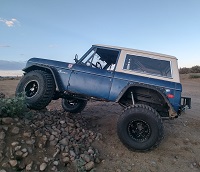
Gunnibronco - Official CCB Member

- Posts: 4074
- Joined: Mon Jan 03, 2011 5:07 pm
- Location: Gardnerville, NV
Re: Materials nerd stuff
http://www.metalcloak.com/2-OD-x-2-W-Du ... p/7302.htm
without a shank, could be welded directly on like the Chevy spring option.
without a shank, could be welded directly on like the Chevy spring option.
"America is at that awkward stage. It's too late to work within the system, but too early to shoot the bastards." – Claire Wolfe
74-AWB 98", ZF5, Atlas4, TGW HP1060 and HP1014 axles, ARBs, 37's, 3.5" lift-5.5" front coil springs, Tahoe rear springs, EFI 302, h-boost, York OBA, 4x4x2, custom dash & gauges
72 U15- Explorer Sport-Candyapple Red (1 of 141)
74-AWB 98", ZF5, Atlas4, TGW HP1060 and HP1014 axles, ARBs, 37's, 3.5" lift-5.5" front coil springs, Tahoe rear springs, EFI 302, h-boost, York OBA, 4x4x2, custom dash & gauges
72 U15- Explorer Sport-Candyapple Red (1 of 141)
-

Gunnibronco - Official CCB Member

- Posts: 4074
- Joined: Mon Jan 03, 2011 5:07 pm
- Location: Gardnerville, NV
Re: Materials nerd stuff
9/16"(14mm) is common for track bar bolts are on vehicles weighing 4000-5500lbs. The new Dodge 1-tons are up to 18mm.
One thing to keep in mind regarding bushings and their bolts, the bolt should not be considered to be stressed in sheer. What keeps in the bushing in place is the friction between the inner metal and the bracket as a result of the compression forces created by the bolt. This is why some bushings are serrated on their ends, so that they mechanically key into the bracket, assisting the friction forces.
One thing to keep in mind regarding bushings and their bolts, the bolt should not be considered to be stressed in sheer. What keeps in the bushing in place is the friction between the inner metal and the bracket as a result of the compression forces created by the bolt. This is why some bushings are serrated on their ends, so that they mechanically key into the bracket, assisting the friction forces.
Cummins R2.8 diesel, ZF5, AtlasII, HP44/BB9, ARBs, coiled / linked suspension, 37" KO2s, full cage, bumpers, etc.
Build Thread: http://www.coloradoclassicbroncos.com/viewtopic.php?f=3&t=5420
Average 23.5 mpg, Best tank: 25.1 mpg
Build Thread: http://www.coloradoclassicbroncos.com/viewtopic.php?f=3&t=5420
Average 23.5 mpg, Best tank: 25.1 mpg
-

Digger - Official CCB Member

- Posts: 1276
- Joined: Fri Jun 21, 2013 7:53 pm
Re: Materials nerd stuff
I'd love something with a threaded shank so that the bar can be adjusted without removing it and to give a broader range of adjustability, but I don't know that one exists. I'd love to run that Metalcloak joint, but I'd need something with a 7/8" shank. That 1" shank is an odd size that I can't find a bung for. My worry with the non-threaded one is that I'd be limited to only Metalcloak's products, as I'm not sure anything else is made to fit the housing they provide. I'm hoping to find a solution that gives me easy access to parts in the long term. I'm thinking about something like these: http://www.synergymfg.com/Synergy-Dual- ... IdXbNLF_nI. I'd have to figure out a sleeve to press them in to, but I like the dual durometer thing. I'd also have to drill out the 1/2" sleeve to 9/16, but that isn't a big deal. The fact that they're stock replacement for a Jeep would give me an easy option long term.
-

Justin - Official CCB Member

- Posts: 6198
- Images: 0
- Joined: Sat Oct 09, 2010 11:04 pm
- Location: Lakewood
Re: Materials nerd stuff
Digger wrote:One thing to keep in mind regarding bushings and their bolts, the bolt should not be considered to be stressed in sheer. What keeps in the bushing in place is the friction between the inner metal and the bracket as a result of the compression forces created by the bolt. This is why some bushings are serrated on their ends, so that they mechanically key into the bracket, assisting the friction forces.
Glad I put this in the Materials Nerd thread. I didn't know that, but it makes total sense.
-

Justin - Official CCB Member

- Posts: 6198
- Images: 0
- Joined: Sat Oct 09, 2010 11:04 pm
- Location: Lakewood
Re: Materials nerd stuff
Digger, Im gonna pick your brain about radius arms so be prepared for some PM's.....
Rob
74 Ranger EFI351w, 4r70w, ARB 5.13 9in, ARB 5.13D44, and a bunch of other goodies. Best of all the family memories.
04 Mustang Cobra, KenneBell 2.2 feeding a lot of boost on E85. Tire shredding machine
New project: 77 Bronco Ranger, body work and more body work.
Very little left of a 72 durango tan explorer sport
74 Ranger EFI351w, 4r70w, ARB 5.13 9in, ARB 5.13D44, and a bunch of other goodies. Best of all the family memories.
04 Mustang Cobra, KenneBell 2.2 feeding a lot of boost on E85. Tire shredding machine
New project: 77 Bronco Ranger, body work and more body work.
Very little left of a 72 durango tan explorer sport
-

ZOSO - Moderator

- Posts: 3908
- Joined: Mon Nov 15, 2010 4:58 pm
- Location: Henderson, Co
Re: Materials nerd stuff
Justin wrote:That 1" shank is an odd size that I can't find a bung for.
http://www.currieenterprises.com/cestor ... px?id=2787
Fits a 1-1/4" ID tube.
"America is at that awkward stage. It's too late to work within the system, but too early to shoot the bastards." – Claire Wolfe
74-AWB 98", ZF5, Atlas4, TGW HP1060 and HP1014 axles, ARBs, 37's, 3.5" lift-5.5" front coil springs, Tahoe rear springs, EFI 302, h-boost, York OBA, 4x4x2, custom dash & gauges
72 U15- Explorer Sport-Candyapple Red (1 of 141)
74-AWB 98", ZF5, Atlas4, TGW HP1060 and HP1014 axles, ARBs, 37's, 3.5" lift-5.5" front coil springs, Tahoe rear springs, EFI 302, h-boost, York OBA, 4x4x2, custom dash & gauges
72 U15- Explorer Sport-Candyapple Red (1 of 141)
-

Gunnibronco - Official CCB Member

- Posts: 4074
- Joined: Mon Jan 03, 2011 5:07 pm
- Location: Gardnerville, NV
Re: Materials nerd stuff
Dude! Thanks! A pair of those, some metalcloak joints, and I'll have me a sweet track bar.
-

Justin - Official CCB Member

- Posts: 6198
- Images: 0
- Joined: Sat Oct 09, 2010 11:04 pm
- Location: Lakewood
Re: Materials nerd stuff
Just dumb luck. I was just looking at Johnny Joints because Zoso mentioned them, and they make a joint with a 1" shank.
"America is at that awkward stage. It's too late to work within the system, but too early to shoot the bastards." – Claire Wolfe
74-AWB 98", ZF5, Atlas4, TGW HP1060 and HP1014 axles, ARBs, 37's, 3.5" lift-5.5" front coil springs, Tahoe rear springs, EFI 302, h-boost, York OBA, 4x4x2, custom dash & gauges
72 U15- Explorer Sport-Candyapple Red (1 of 141)
74-AWB 98", ZF5, Atlas4, TGW HP1060 and HP1014 axles, ARBs, 37's, 3.5" lift-5.5" front coil springs, Tahoe rear springs, EFI 302, h-boost, York OBA, 4x4x2, custom dash & gauges
72 U15- Explorer Sport-Candyapple Red (1 of 141)
-

Gunnibronco - Official CCB Member

- Posts: 4074
- Joined: Mon Jan 03, 2011 5:07 pm
- Location: Gardnerville, NV
Re: Materials nerd stuff
I need to decide if I want to use a Metalcloak joint on the frame end of my trackbar. I'm still using the stock poly bushing on the axle side. I have an extra new Ruffstuff heim & bung I was going to use, when lengthen my track bar. But I really would like to put a bushing back in. We'll see.
"America is at that awkward stage. It's too late to work within the system, but too early to shoot the bastards." – Claire Wolfe
74-AWB 98", ZF5, Atlas4, TGW HP1060 and HP1014 axles, ARBs, 37's, 3.5" lift-5.5" front coil springs, Tahoe rear springs, EFI 302, h-boost, York OBA, 4x4x2, custom dash & gauges
72 U15- Explorer Sport-Candyapple Red (1 of 141)
74-AWB 98", ZF5, Atlas4, TGW HP1060 and HP1014 axles, ARBs, 37's, 3.5" lift-5.5" front coil springs, Tahoe rear springs, EFI 302, h-boost, York OBA, 4x4x2, custom dash & gauges
72 U15- Explorer Sport-Candyapple Red (1 of 141)
-

Gunnibronco - Official CCB Member

- Posts: 4074
- Joined: Mon Jan 03, 2011 5:07 pm
- Location: Gardnerville, NV
Re: Materials nerd stuff
ZOSO wrote:Digger, Im gonna pick your brain about radius arms so be prepared for some PM's.....
Fire away.
Cummins R2.8 diesel, ZF5, AtlasII, HP44/BB9, ARBs, coiled / linked suspension, 37" KO2s, full cage, bumpers, etc.
Build Thread: http://www.coloradoclassicbroncos.com/viewtopic.php?f=3&t=5420
Average 23.5 mpg, Best tank: 25.1 mpg
Build Thread: http://www.coloradoclassicbroncos.com/viewtopic.php?f=3&t=5420
Average 23.5 mpg, Best tank: 25.1 mpg
-

Digger - Official CCB Member

- Posts: 1276
- Joined: Fri Jun 21, 2013 7:53 pm
Re: Materials nerd stuff
Gunnibronco wrote:I need to decide if I want to use a Metalcloak joint on the frame end of my trackbar. I'm still using the stock poly bushing on the axle side. I have an extra new Ruffstuff heim & bung I was going to use, when lengthen my track bar. But I really would like to put a bushing back in. We'll see.
If everything else in your front end is tight, you should be okay. With front track bars you have to be careful not to drop the "spring rate" of the track bar assembly too far because you could induce death wobble. If you look at OE track bars, they tend to run small, high rate bushings, or a combination of a small bushing and a cross-axis ball joint.
Cummins R2.8 diesel, ZF5, AtlasII, HP44/BB9, ARBs, coiled / linked suspension, 37" KO2s, full cage, bumpers, etc.
Build Thread: http://www.coloradoclassicbroncos.com/viewtopic.php?f=3&t=5420
Average 23.5 mpg, Best tank: 25.1 mpg
Build Thread: http://www.coloradoclassicbroncos.com/viewtopic.php?f=3&t=5420
Average 23.5 mpg, Best tank: 25.1 mpg
-

Digger - Official CCB Member

- Posts: 1276
- Joined: Fri Jun 21, 2013 7:53 pm
Digger wrote:If everything else in your front end is tight, you should be okay. With front track bars you have to be careful not to drop the "spring rate" of the track bar assembly too far because you could induce death wobble. If you look at OE track bars, they tend to run small, high rate bushings, or a combination of a small bushing and a cross-axis ball joint.
Thanks for the advice. Good to hear I don't need to buy more stuff!
"America is at that awkward stage. It's too late to work within the system, but too early to shoot the bastards." – Claire Wolfe
74-AWB 98", ZF5, Atlas4, TGW HP1060 and HP1014 axles, ARBs, 37's, 3.5" lift-5.5" front coil springs, Tahoe rear springs, EFI 302, h-boost, York OBA, 4x4x2, custom dash & gauges
72 U15- Explorer Sport-Candyapple Red (1 of 141)
74-AWB 98", ZF5, Atlas4, TGW HP1060 and HP1014 axles, ARBs, 37's, 3.5" lift-5.5" front coil springs, Tahoe rear springs, EFI 302, h-boost, York OBA, 4x4x2, custom dash & gauges
72 U15- Explorer Sport-Candyapple Red (1 of 141)
-

Gunnibronco - Official CCB Member

- Posts: 4074
- Joined: Mon Jan 03, 2011 5:07 pm
- Location: Gardnerville, NV
Re: Materials nerd stuff
Here's some 7/8" shank bushings:
http://www.ballisticfabrication.com/Bal ... _1646.html
http://www.ballisticfabrication.com/For ... _1944.html
Synergy:
http://www.polyperformance.com/shop/Syn ... 16605.html
And sleeve:
http://www.polyperformance.com/shop/Syn ... 28753.html
http://www.ballisticfabrication.com/Bal ... _1646.html
http://www.ballisticfabrication.com/For ... _1944.html
Synergy:
http://www.polyperformance.com/shop/Syn ... 16605.html
And sleeve:
http://www.polyperformance.com/shop/Syn ... 28753.html
1973 Bronco, 351 SEFI, Locked, discs, 35's ZF-5spd and Atlas 4spd. 235:1 Crawl Ratio. It may be ugly, but it's slow.
http://www.ucora.org
http://www.ucora.org
-

Jesus_man - Official CCB Member

- Posts: 5987
- Joined: Thu Nov 11, 2010 9:36 am
- Location: California
Re: Materials nerd stuff
Looks like Ballistic has a 1" threaded insert, cheaper too.
http://www.ballisticfabrication.com/10- ... _1405.html
http://www.ballisticfabrication.com/10- ... _1405.html
"America is at that awkward stage. It's too late to work within the system, but too early to shoot the bastards." – Claire Wolfe
74-AWB 98", ZF5, Atlas4, TGW HP1060 and HP1014 axles, ARBs, 37's, 3.5" lift-5.5" front coil springs, Tahoe rear springs, EFI 302, h-boost, York OBA, 4x4x2, custom dash & gauges
72 U15- Explorer Sport-Candyapple Red (1 of 141)
74-AWB 98", ZF5, Atlas4, TGW HP1060 and HP1014 axles, ARBs, 37's, 3.5" lift-5.5" front coil springs, Tahoe rear springs, EFI 302, h-boost, York OBA, 4x4x2, custom dash & gauges
72 U15- Explorer Sport-Candyapple Red (1 of 141)
-

Gunnibronco - Official CCB Member

- Posts: 4074
- Joined: Mon Jan 03, 2011 5:07 pm
- Location: Gardnerville, NV
Re: Materials nerd stuff
JD, thanks. I actually have the first one you posted. The challenge is that none of the off the shelf stuff fits with the combo of 7/8" shank, 2" wide mounting width, and 9/16 (or bigger) bolt size I need. I'll either do something with a 1" shank or a welded sleeve like the Synergy stuff you posted and just cut down a longer bushing. Not sure which is the better option. Gunni, thanks for the link, not sure how I missed that one. I've spent a ridiculous amount of time on Ballistic's site.
-

Justin - Official CCB Member

- Posts: 6198
- Images: 0
- Joined: Sat Oct 09, 2010 11:04 pm
- Location: Lakewood
Re: Materials nerd stuff
Digger wrote:Justin wrote:x2, if only to get a sense of what is actually important. From an engineering standpoint, we use some really neat stuff. For example, a RuffStuff 1.25" heim is rated for 78,000lbs before is starts to deform. That's ridiculous, and I suspect lots of rigs wind up with extra weight because we're overbuilding things.
The other thing that happens is people replace a bushing or other compliant joint with a rod end thinking that will make the truck stronger, but now the spike loads have increased 4-fold because there is nothing to absorb the impacts and the system as a whole becomes weaker.
:
This has been my pet peeve for 20 years, especially bumpers that are so strong and overbuilt that any impact that occurs just drives the forces directly to the vehicle frame.
Back in 1990, I built a front bumper for my Ford Ranger that would crush on impact. It did just that when hit later and protected the frame.
Rant over.
J.E.
1969 Ford Bronco with: 351W, Q-Jet, ARB front locker, 3" Suspension lift, NP435 transmission, 33" Goodyear's, roll cage, body rough.
- Unaweep
- Official CCB Member

- Posts: 291
- Joined: Thu Sep 12, 2013 2:02 pm
- Location: Grand Junction, Co.
Re: Materials nerd stuff
Digger wrote:9/16"(14mm) is common for track bar bolts are on vehicles weighing 4000-5500lbs. The new Dodge 1-tons are up to 18mm.
One thing to keep in mind regarding bushings and their bolts, the bolt should not be considered to be stressed in sheer. What keeps in the bushing in place is the friction between the inner metal and the bracket as a result of the compression forces created by the bolt. This is why some bushings are serrated on their ends, so that they mechanically key into the bracket, assisting the friction forces.
I'm replacing heim joints that came with my Bloody Knuckle radius arms with Metal Cloak bushings. The heims came with 1" grade 5 hardware. The Metal Cloak bushings & Ruffstuff link mounts are built to accept 9/16" hardware. I know these are built specifically for Jeep suspensions. Is this adequate for our Broncos? Also would grade 5 or 8 be preferred? Not only for strength but also considering the likely hood of grade 5 to bend vs grade 8 to break.
Would it even be smart to drill out the MC bushing to accept a larger bolt?
"America is at that awkward stage. It's too late to work within the system, but too early to shoot the bastards." – Claire Wolfe
74-AWB 98", ZF5, Atlas4, TGW HP1060 and HP1014 axles, ARBs, 37's, 3.5" lift-5.5" front coil springs, Tahoe rear springs, EFI 302, h-boost, York OBA, 4x4x2, custom dash & gauges
72 U15- Explorer Sport-Candyapple Red (1 of 141)
74-AWB 98", ZF5, Atlas4, TGW HP1060 and HP1014 axles, ARBs, 37's, 3.5" lift-5.5" front coil springs, Tahoe rear springs, EFI 302, h-boost, York OBA, 4x4x2, custom dash & gauges
72 U15- Explorer Sport-Candyapple Red (1 of 141)
-

Gunnibronco - Official CCB Member

- Posts: 4074
- Joined: Mon Jan 03, 2011 5:07 pm
- Location: Gardnerville, NV
Re: Materials nerd stuff
That's a huge bolt, who made that heim? Most 1.25 shank heims use a 3/4" bolt-my Ruffstuffs came with 3/4" grade 8 from Battlement. To shim it down to 9/16 I'd seriously consider using these: http://www.ruffstuffspecialties.com/catalog/FIXIT.html, although they're not 100% useful if it's actually a 1" hole.
-

Justin - Official CCB Member

- Posts: 6198
- Images: 0
- Joined: Sat Oct 09, 2010 11:04 pm
- Location: Lakewood
Re: Materials nerd stuff
The heim & bracket from Bloody Knuckle were for 1" hardware (no high misalignment, just tube spacers). They've been removed. I'm guessing they are Ruffstuff heims. Their 1.25" heim is built for a 1" bolt, but they offer misalignment spacers for 9/16", 5/8" & 3/4" bolts.
The Ruffstuff bracket & Metal Cloak bushing are for 9/16", these are what I'm using. I'm thinking 9/16" grade 8 should be ok, but wanted a more educated opinion on the matter. They are pretty important to the whole steering/driving thing.
Sorry if I wasn't clear.
The Ruffstuff bracket & Metal Cloak bushing are for 9/16", these are what I'm using. I'm thinking 9/16" grade 8 should be ok, but wanted a more educated opinion on the matter. They are pretty important to the whole steering/driving thing.
Sorry if I wasn't clear.
"America is at that awkward stage. It's too late to work within the system, but too early to shoot the bastards." – Claire Wolfe
74-AWB 98", ZF5, Atlas4, TGW HP1060 and HP1014 axles, ARBs, 37's, 3.5" lift-5.5" front coil springs, Tahoe rear springs, EFI 302, h-boost, York OBA, 4x4x2, custom dash & gauges
72 U15- Explorer Sport-Candyapple Red (1 of 141)
74-AWB 98", ZF5, Atlas4, TGW HP1060 and HP1014 axles, ARBs, 37's, 3.5" lift-5.5" front coil springs, Tahoe rear springs, EFI 302, h-boost, York OBA, 4x4x2, custom dash & gauges
72 U15- Explorer Sport-Candyapple Red (1 of 141)
-

Gunnibronco - Official CCB Member

- Posts: 4074
- Joined: Mon Jan 03, 2011 5:07 pm
- Location: Gardnerville, NV
38 posts
• Page 1 of 2 • 1, 2
Who is online
Users browsing this forum: No registered users and 2 guests
